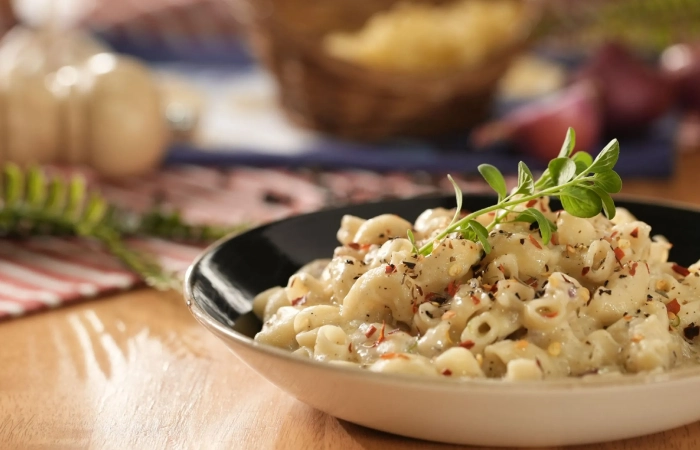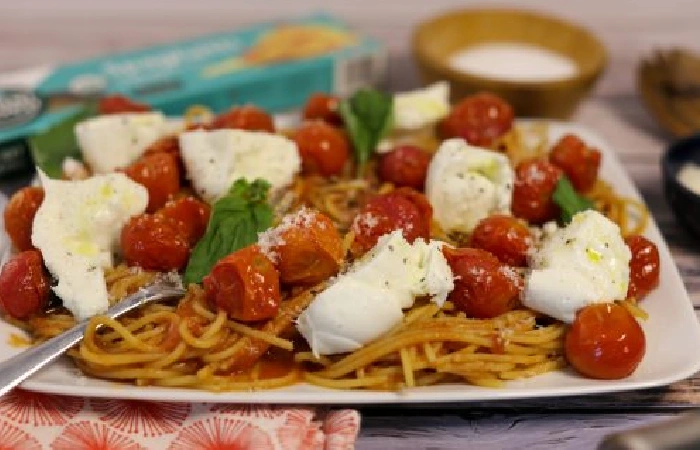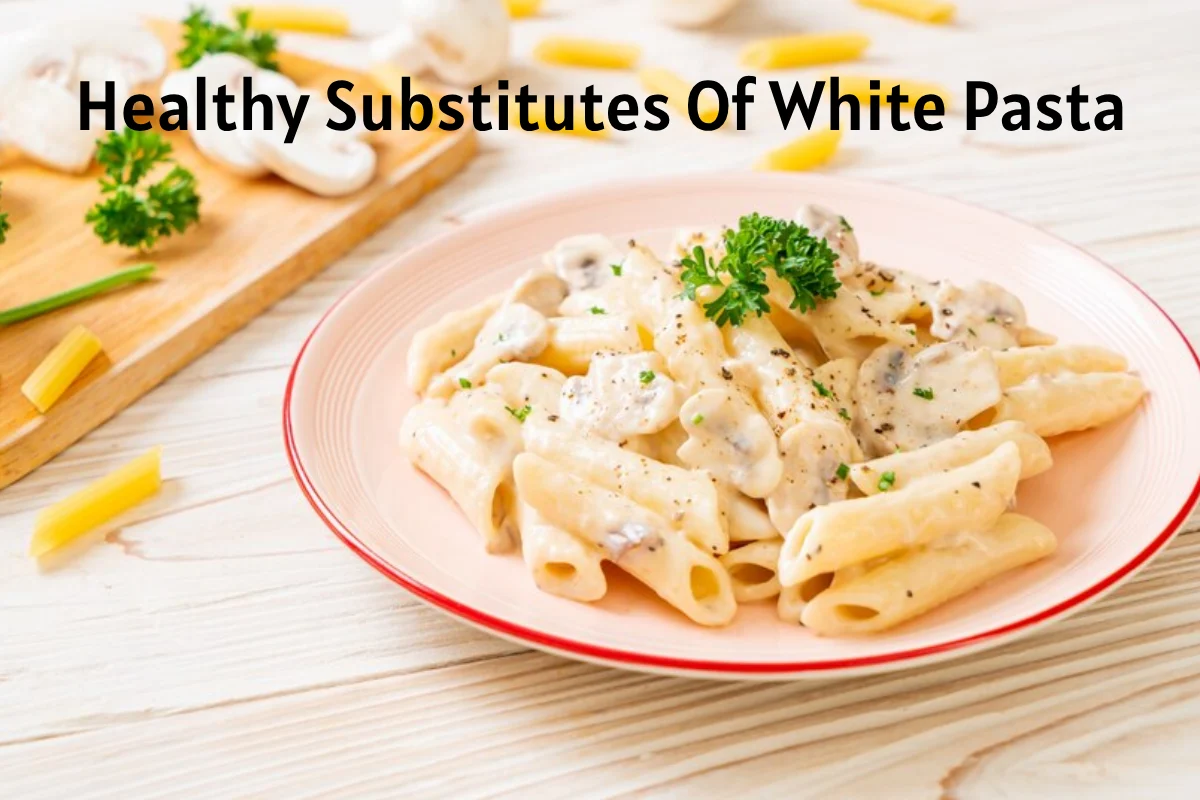Table of Contents
Healthy Alternatives to White Pasta
Healthy Substitutes Of White Pasta: Everyone loves comfort carbs, but refined flour noodles don’t offer much nutrition. The alternative noodles here, however, have more fiber, less gluten, and other benefits. In addition, pasta is undoubtedly one of the fastest and coolest customs for delivering dinner to the table. Of course, you don’t need to be a great chef to boil a pot of water and open a jar of gravy, but you can touch like one once the meal is a hit with the whole family, as crowd-pleasing ease food typically is.
However, pasta has a downside: most leftovers are made from a sophisticated grain, white flour. According to research available in the February 2021 issue of The BMJ, eating lots of refined carbohydrates, like pasta, can increase your chances of heart disease and early death. That’s not something you want at your weeknight dinner.
Also read: https://www.smarthealthweb.com/best-stretches-morning-stretches-to-help-kick-start-your-day/
Pasta Gets A Bad Rap When It Comes To Health
Says Grace Deroche, RD, the National Academy of Nutrition and Dietetics spokeswoman. But not all pasta remains created equal, she says. Today, you’ll find many alternative kinds of pasta on store shelves that remain situated and made with refined grains. Instead, they’re frequently complete from the nutritional superstars most people need in their diets: Beans and legumes. And also whole grains. Unsuitable, deceptive labels and concealed ingredients can stimulate the selection of a creation that is truly a development over white pasta.
What Is The Nutritional Value Of Pasta?

Keeping proper portions in mind is essential regardless of the pasta you choose. The serving size recommended by the Dietary Rules for Americans remains only half a cup cooked, which remains about 1 ounce (oz) dry. It’s not hard to surpass that amount, especially in a pasta main course. Many products provide nutritional information twice that amount, so be aware of how much you eat.
For reference, according to the US Department of Agriculture (USDA), 2 oz of dry white pasta (about 1 cup cooked) contains:
- Calories: 211
- Protein: 7 grams (g)
- Fat: 1g
- Carbohydrates: 43g
- Fiber: 2g
Compare these nutrition facts to the alternative pasta below to get an idea of what options you could add to your pantry.
1. Edamame Paste
This one-ingredient paste is Deroche’s absolute favorite. “It has a mild flavor that is a lot like regular spaghetti. It’s great with pesto,” she says. So whether you want to increase protein, Blow the white paste out of the water on both sides. See nutritional details below. The product name is a bit misleading. Soy spaghetti would remain more appropriate. The noodles are 100 percent soy flour. Edamame, on the other hand, remains young soybeans that are usually eaten fresh, not dried.
Picky eaters may not remain willing to go all out on edamame pasta, especially at first. I like to mix it with even pasta, says Deroche. That’s good advice regarding any new pasta you’re trying to get her family to accept.
Here’s what you’ll find in 2 oz Explore Cuisine Edamame Spaghetti:
- Calories: 180
- Protein: 24g
- Fat: 3.5g
- Carbs: 20g
- Fiber: 13g
2. Brown Rice Pasta
Noodles made with rice are an “alternative” for many people. In Asian culture, we have many dishes dissimilar to rice noodles. I will use brown rice pasta when manufacturing an Asian noodle dish, but I wouldn’t use it in a red sauce or Italian-inspired dish.”
If you can’t eat gluten and like the palate and feel of brown rice pasta, it may continue to be something you must save on hand. But if you’re observing fiber and protein, you may need to try a dissimilar nice.
Considering how full of fiber brown rice is as a whole food, it’s surprising how many grams of fiber remains contained in brown rice pasta, says Deroche. However, nutritionally, it’s not a development over old-style white pasta.
[Here’s what you’ll discover in 2 oz of Lundberg Family Farms Brown Rice Pasta]:
- Calories: 210
- Protein: 4g
- Fat: 2g
- Carbohydrates: 43g
- Fiber: 2g
3. Chickpea Paste
Chickpea paste is a divisive food. People appear to love or hate it, so you will want to attempt it out to discover which site you’re in. But be warned, if you’re looking at the ubiquitous Bonza brand, you’ll have to decipher the label before making any choices.
For the best flavor and texture, many fans recommend cooking chickpea pasta for less time than the package directions indicate and rinsing it before serving. However, Deroche prefers chickpea pasta in cold dishes, like pasta salad. Particularly for people who don’t eat beans, which research shows remain so helpful to their health, it’s value trying to find a way to enjoy a bean-based pasta, she says. In addition, it’s a countless plant-based protein.
[Here’s what you’ll discover in 2 oz of Bonza Garbanzo bean Pasta]:
- [Calories: 190]
- [Protein: 11g]
- [Fat: 3g]
- [Carbohydrates: 35g]
- [Fiber: 5g]
4. Quinoa Pasta

Quinoa consumes a well-deserved standup as a superfood. According to the USDA, this is since it’s a good fiber basis and covers many extra vital nutrients, including magnesium, iron, B vitamins, and antioxidants.
Though, quinoa pasta is not similar. “I haven’t seen a brand where quinoa is the chief ingredient. The name is deceptive,” says Deroche. Quinoa is typically the second or third ingredient, behindhand rice flour, cornmeal, or both. So, if you want additional protein or fiber, choose something else.
[Here’s what you’ll discover in 2 oz of Edison Grainer Quinoa Pasta]:
- [Calories: 200]
- [Protein: 5g]
- [Fat: 1.5g]
- [Carbohydrates: 42g]
- [Fiber: 1g]
5. Lentil Pasta
Lentil pasta has similar benefits to the edamame mentioned above and chickpea pasta. You will get more protein and fiber than in traditional pasta. What you select will be a matter of taste.
This alternative pasta style is not Deroche’s favorite. I love lentils, but here remain better options. I don’t know what happens in processing. It gets rubbery and mushy, and I don’t like it,” she says. Regarding alternative pasta, personal preference matters; it is unlikely that you will eat pasta you do not like.
[Here’s what you’ll discover in 2 oz of Barilla Red Lentil Pasta]:
- [Calories: 180]
- [Protein: 13g]
- [Fat: 1.5g]
- [Carbohydrates: 34g]
- [Fiber: 6g]
Conclusion
Pasta is a convenient and filling meal, but some types of pasta offer empty carbs, suggesting very little nutritional value together with the calories. As people’s sympathy toward carbohydrates, gluten, and the glycemic index (GI) grows, they may miracle.
Also read: https://www.smarthealthweb.com/financial-health-affects-physical-health/

